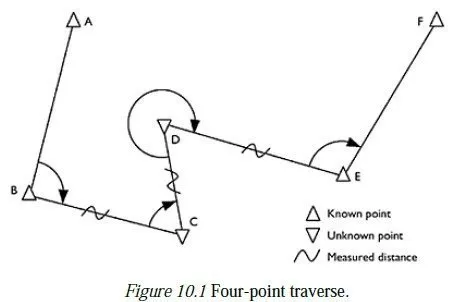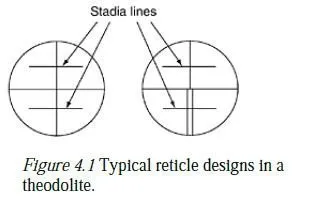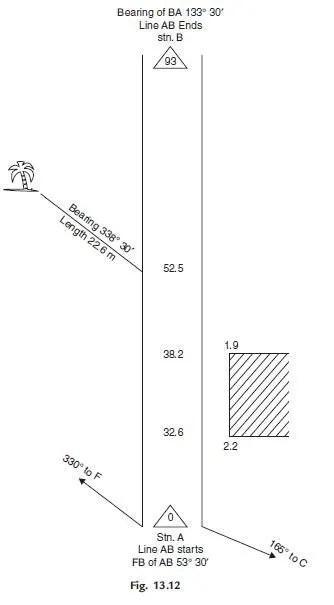A freely suspended and properly balanced magnetic needle is expected to show magnetic meridian.
However, local objects like electric wires and objects of steel attract magnetic needle towards themselves.
Thus, needle is forced to show slightly different direction. This disturbance is called local attraction.
The list of materials which cause local attraction are:
(i) magnetic rock or iron ore,
(ii) steel structures, iron poles, rails, electric poles and wires,
(iii) key bunch, knife, iron buttons, steel rimmed spectacles, and
(iv) chain, arrows, hammer, clearing axe etc.
Surveyor is expected to take care to avoid local attractions listed in (iii) and (iv) above.
Detecting Local Attraction
For detecting local attraction it is necessary to take both fore bearing and back bearing for each line. If the difference is exactly 180°, the two stations may be considered as not affected by local attraction. If difference is not 180°, better to go back to the previous station and check the fore bearing. If that reading is same as earlier, it may be concluded that there is local attraction at one or both stations.
Correcting Observed Bearings
If local attraction is detected in a compass survey observed bearings may be corrected by any one of the following two methods:
Method I: It may be noted that the included angle is not influenced by local attraction as both readings are equally affected. Hence, first calculate included angles at each station, commencing from the unaffected line and using included angles, the corrected bearings of all lines may be calculated.
Method II: In this method, errors due to local attraction at each of the affected station is found starting from the bearing of a unaffected local attraction, the bearing of the successive lines are adjusted.




very nice paragraph i like that
mind bloing simplification
means its is so easy to learn from this topic
thanks you
FB AND BB IS DIFFERENCE IS 180 THAN THAT PLACE IS LOCAL ATTRACTION FREE